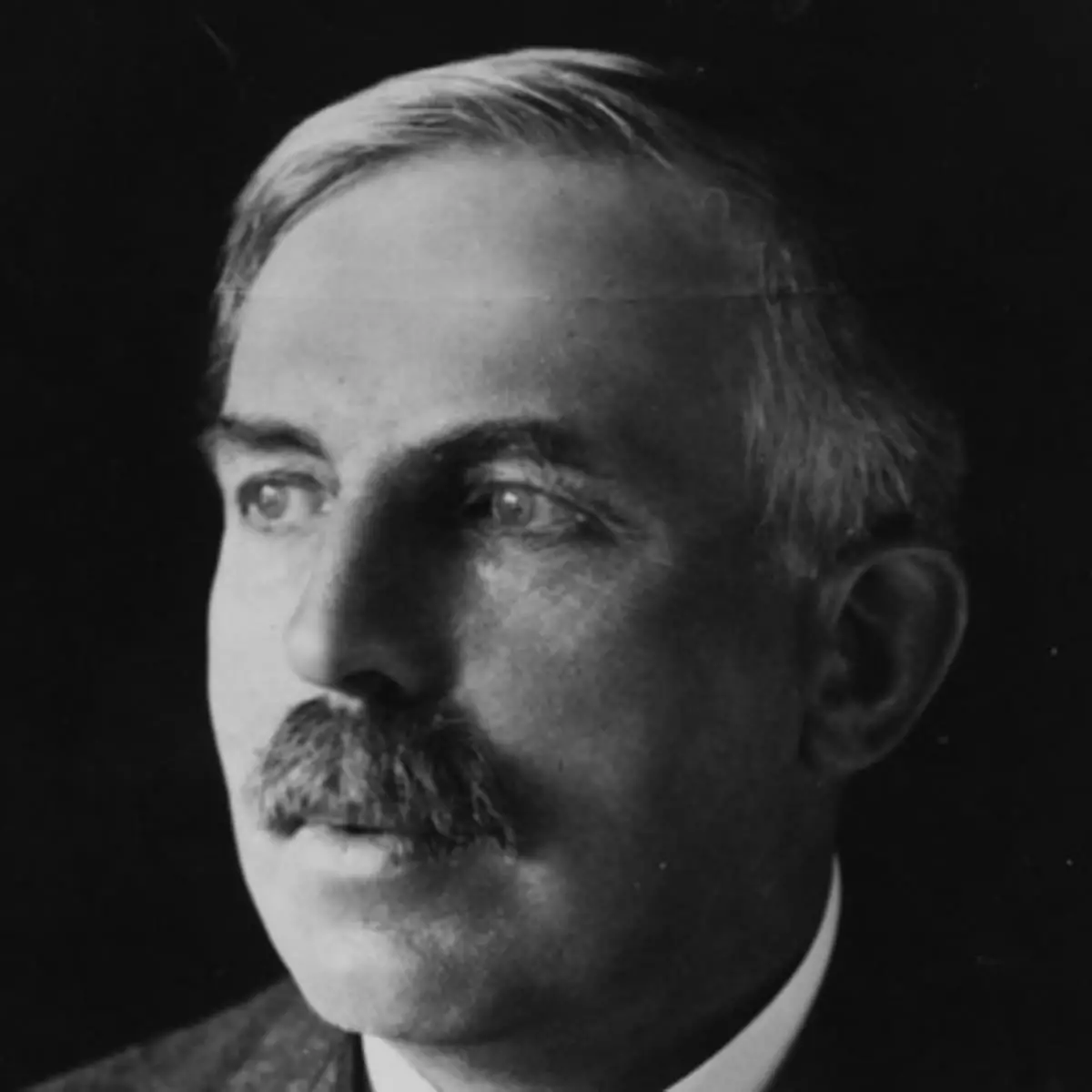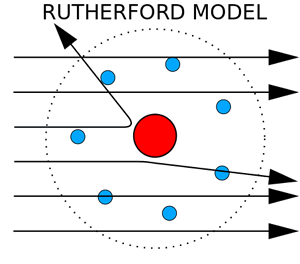Ernest Rutherford Atomic Theory Model & Experiment
Ernest Rutherford Contribution
Ernest Rutherford was a New Zealand-born British chemist and physicist known for his pioneering work in the study of radioactivity.
In 1903, he became the first person to demonstrate that radioactive materials emit energy in a continuous stream of particles and are not merely energy sources.
This ionizing radiation can be a dangerous health hazard if present at high levels, but it is also the mechanism by which some medical imaging devices operate.
Who is Ernest Rutherford
Ernest Rutherford Life & Education
Rutherford was born on August 30, 1871, in Brightwater, New Zealand. When his father died at sea four years later, Rutherford became the ward of his uncle, a professional land surveyor.
Rutherford began his secondary education at a teachers’ training college in Auckland in 1889, then moved to Sydney to study commencing in 1890 and graduated with a B.A. from the University of Sydney two years later.
In 1894 he moved to England to pursue his graduate work and was awarded a B.Sc. from the University of Cambridge that same year.
Rutherford began his postdoctorate in 1896 at McGill University but returned to England in 1897 for further study of photography and electrochemistry as research assistants at King’s College London. He became a Fellow of King’s College in 1898 and was able to conduct his own research.

Rutherford married Mary Georgina Newton in 1908, and the two later had a son, E. Charles. Meanwhile, Rutherford continued with his research into radioactivity and conducted experiments which led to his becoming known as the father of nuclear physics.
He received many awards for this work, including the Nobel Prize in Chemistry in 1908 for “investigations into the disintegration of the elements, and the chemistry of radioactive substances.
This, in turn, led to the chemistry of the chemical elements and the discovery of nuclear physics.” Rutherford became Professor of Chemistry at McGill in 1910.
In 1914, Rutherford shared a Nobel Prize with Frederick Soddy and Arthur Compton “for their investigations into the disintegration of radioactive substances, and the chemistry of radioactive compounds.”
However, because it was discovered that a German journalist who was traveling with him on this trip had betrayed his research to Germany, he was awarded no Nobel Prize for this work.
Rutherford left McGill to take the prestigious Cavendish Laboratory’s directorship at Cambridge in 1919, where he served until his death. He also served as Secretary of the Royal Society from 1920 to 1925 and President from 1930 to 1935.
Rutherford became a Commander of the Order of Merit and was knighted in 1927 by King George V. He died at Cambridge on October 19, 1937.
Ernest Rutherford Experiments.
The Rutherford experiment was made to investigate the characteristics of alpha and beta particles emitted by radioactive materials.
In 1911, Ernest Rutherford performed an experiment that became an icon for the discovery of the atom. Ernest Rutherford and his team experimented to determine the charge and structure of an atom.
The experiment consisted of firing a beam of alpha particles at a thin gold foil and then analyzing what got captured by his team.
When the particles hit the gold, gold atoms were dislodged. The experiment showed that the particles could only go a little way before they hit another particle and bounced off. Rutherford’s experiment showed that the particles were either bouncing off inelastically or repelled by something in the atom.
From this experiment, Rutherford determined that atom structure, including electrons, is entirely negative and that there are an equal number of protons as there are electrons.
What Did Ernest Rutherford Discover?
Ernest Rutherford was a New Zealand-born British physicist who is famously known for his work in the field of nuclear physics, and more specifically, for proving that atoms have a nucleus.
Rutherford’s experiments are considered to be some of the most important in history because they led to radioactivity discovery, which he then used to prove Albert Einstein’s theory about atomic energy. He also helped establish quantum mechanics as an accepted scientific theory.
Interesting Facts About Ernest Rutherford
Based on his research with alpha rays, Ernest Rutherford hypothesized that the atom consisted of an “indivisible” nucleus with negative electrons swirling around it. He developed this theory through experimentation, which was made possible by a significant discovery.
In 1912, as part of his research into radioactivity, Rutherford observed that when alpha rays penetrated a thin sheet of gold, they were substantially deflected. Some particles were even turned back.
Ernest Rutherford Nobel Prize
Ernest Rutherford is a Chemist and physicist who was awarded the Nobel Prize in Chemistry in 1908. He is best known for his experimental observations on the composition of atoms.
Rutherford is credited with separating the atom and splitting the nucleus of the atom. Rutherford then used his nuclear splitting experiments to disprove the theory that atoms are indestructible, which opened up the possibility for nuclear fission.
Rutherford’s pioneering work in nuclear physics helped to establish the field of nuclear physics. His discovery of the atomic nucleus and artificial radioactive disintegration as a source of energy, which later became known as nuclear power, created worldwide interest in nuclear energy.
Ernest Rutherford Split the Atom
Rutherford’s work earned a Nobel Prize for the discovery of nuclear disintegration. He conducted experiments in his lab in 1911.
He discovered that when either alpha particles or beta particles bombard a radioactive substance, the bombardment may sometimes cause the atom’s nucleus to split in two with the release of a lot of energy.
The splitting sets off a nuclear chain reaction which makes nuclear energy. The splitting of the atom has many benefits, but it also has some consequences too.
Interesting Facts About Ernest Rutherford
What was Ernest Rutherford famous for?
His theory of the atomic nucleus, in which he proposed that most of the mass of an atom is concentrated in a small dense nucleus consisting of protons and neutrons.
Rutherford also characterized alpha, beta, and gamma radiation discovered that atoms have increased by electrons, and researched radioactivity.
What was Ernest Rutherford’s contribution to science?
Rutherford’s work on the atomic nucleus was foundational to the contemporary understanding of matter. His insights, along with those of others influenced by him, led to a deep understanding of the atomic structure and led directly to many discoveries in the 20th century, such as radioactivity’s inner workings and how neutrons work.
Rutherford’s early research was primarily in nuclear physics. He extended his interest in biology after becoming interested in X-rays, which were then used for medical diagnosis.
Rutherford’s first X-ray studies used an electrical discharge in a glass tube to generate X-rays. Later he turned to use cathode rays (electrons) as a source for X-rays, which had the advantage of being more easily controlled and produce less dangerous radiation.
As with the work of many scientists active in the early 20th century, much of Rutherford’s research on radioactivity was conducted at his own laboratory. From the mid-1910s, his research was conducted mostly at the Cavendish Laboratory in Cambridge; he never had his own private laboratory.
Rutherford and his collaborators’ early work was to demonstrate the existence of atoms by producing artificial radioactivity, which could be used to study atomic structure.
In 1911 they split a uranium atom with a punch through an electric discharge in an evacuated glass tube, first for one minute and then for several hours.
They found that the atom split into smaller fragments, which emitted alpha particles or helium nuclei. They could also detect electrons released from the atomic nucleus.
Rutherford used these findings to explain what happens in a radioactive atom. He postulated that atoms were constructed from smaller building blocks that he called atomic nuclei. The nucleus consisted of protons and neutrons (which he considered bound together by electrical forces).
Rutherford also showed that alpha particles have a mass slightly less than hydrogen. He further demonstrated that alpha particles were helium nuclei (formed from two protons and two neutrons) and gamma rays had a wavelength (i.e., frequency) of about 5.5 cm, which matched the absorption properties of calcium atoms in the body tissue.
This suggested to him the idea that X-rays might be used to kill living tissue by destroying calcium atoms. Rutherford also laid down the basis for the use of radioactivity as a method in medicine and agriculture.
What were some of Ernest Rutherford’s other achievements?
In addition to his discoveries about the nucleus, Rutherford was instrumental in the development of nuclear physics, demonstrating through bombarding atoms with ever more energetic particles that new elements could be created with atomic nuclei.
He was the first Cavendish physics professor at Cambridge, where he spent much of his scientific career. He also served as president of the Royal Society from 1925 to 1930. Rutherford was knighted in 1914.
When did he do Ernest Rutherford’s work?
Ernest Rutherford’s work in nuclear physics and radioactivity spanned over forty years from around 1895 until he died in 1937.
His work on the atomic nucleus was done during this period from 1911 to 1919 when he moved on to other scientific endeavors that included the discovery of tritium, a radioactive isotope of hydrogen, and the discovery of plutonium, another radioactive element.
Additionally, Rutherford was a biophysicist who researched biology, particularly on X-rays.
What contributions did Ernest Rutherford make to his field?
Rutherford laid down the foundation for progress on nuclear physics and radioactivity. He was the first to disintegrate a nucleus with an electrical discharge in an evacuated glass tube; he coined the term ‘proton’ and discovered its positive charge.
His work showed that the atom had its mass increased by electrons, and it revealed that radiation such as gamma rays consists of short wavelength electromagnetic waves. Also, as a biophysicist, Rutherford researched X-rays and radiation at the University of Manchester.
What were Ernest Rutherford’s greatest contributions?
Rutherford was one of the great pioneers in the development of nuclear physics. He was the first to propose that new elements could be made by bombarding atoms with energetic particles; he coined the term ‘proton’ and discovered its positive charge; thus, he laid down the foundation for progress on nuclear physics radioactivity.
What were Ernest Rutherford’s greatest discoveries?
Among the most important of Rutherford’s scientific contributions was his theory of the atomic nucleus. He proposed that most of the atom’s mass is concentrated in a small dense nucleus consisting of protons and neutrons.
The Rutherford model for an atom consisted of electrons orbiting a compact positively charged nucleus, similar to planets around the sun.
He also characterized alpha, beta, and gamma radiation; he discovered that atoms have increased by electrons and did research on radioactivity.
What was Rutherford’s most valuable contribution to mankind’s knowledge?
Rutherford’s work laid the foundation for progress in nuclear physics. His work showed that the atom had its mass increased by electrons, and it revealed that radiation such as gamma rays consists of short wavelength electromagnetic waves.
As a biophysicist, Rutherford researched X-rays and radiation at the University of Manchester in England.
What was the most difficult part of Rutherford’s work?
The difficult part of Rutherford’s work was that he had no elementary particle physics tools; consequently, his atomic model’s successful development was a result of ingenuity and imagination.
He had to devise new instruments to study nuclear chemistry, and he devised new techniques to study radioactive atoms. Although Rutherford’s work was relatively simple in conception, it was tough to successfully carry out because the atom is so tiny and highly non-linear.
What has been left for future generations?
Rutherford’s work still lays the foundation for progress in nuclear physics. It provides a strong background for quantum mechanics measurements.
Furthermore, it is possible to apply nuclear physics to medicine and agriculture, where radiation is used to treat or kill bacteria, fungi, insects, etc.

